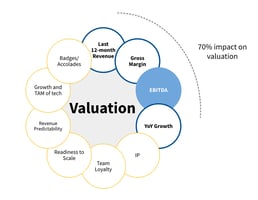As first-time tech services founders, we struggled to wrap our heads around finances. We were...
Are Your Financial Systems Right For You? A Conversation

Sana Khalid, Founder of Minerva, recently started an email series providing guidance on handling business finance. I’ve been following the series and would highly recommend it to everyone. You can access the series here.
As I was reading her guides, she mentioned:
“…working with financial systems that the business has outgrown [is] one of the core problems that eventually lead to other issues.”
I found the statement intriguing and asked her:
How does one know if they have outgrown their financial systems and are there any benchmarks for it?
Sana kindly took the time to give an amazing response that I wanted to share with the readers of the Vixul blog. Please check out her response in quotes and my commentary on her response:
For me, the most basic red flag is when there are too many spreadsheets or links to even remember. It means you need to, at the least, move to a more consolidated system.
Love this basic call-out. In my view, this is a symptom of finance not being a part of strategy. Finance without strategy turns into a large number of sheets that have developed a life of their own after being left over from ad-hoc analyses performed for various decisions.
The team is spending too much time finding workarounds or ‘fixing’ data in spreadsheets (or software-generated reports), every time someone asks for data.
You need data to make decisions. If you are not able to get the right data at the right time, you won’t be able to make decisions based on data. Having to fix the data, and finding inconsistencies, erodes the confidence in the data. Then you can’t trust data to make decisions anymore. That’s a sign you need to build on and improve your financial systems.
If you can’t control who sees what data, that could also be a sign - after a while, the team grows and different people need (and should have) different kinds of access (for better controls).
There are two parts to the question of who sees what data. Are people seeing the data they need to see? Are you sharing data with someone you're not supposed to share with? Think about all the different people who need data. Project assignments, confidential HR information, billing, invoicing, milestone tracking, and sales, are all tied to your financial systems. So you will need to give a wide variety of people access to parts of the data for your organization to run effectively.
An important one as a company grows is also lack of real-time visibility or efficient and effective reporting - if you don’t have eyes on your most important metrics all the time and it is slowing down decision-making, either the process or the tool is broken.
As you grow the stakes get higher, you have more liabilities, more inertia, a brand value to protect, and so on. Your decision-making needs to mature accordingly. The goalposts for what is acceptable visibility will continuously move as you grow. And so your systems will need to improve continuously.
And one that I’ve personally lived through (it was horrible) is the regular nightmare that an error could put us out of business. I just couldn’t trust the numbers - partially because of the tools and processes and partially because of the team not being prepared for the growth we were experiencing. So, sometimes it’s not just the tool but also that your team hasn’t grown (in terms of capabilities and not necessarily headcount) with the business.
We talked about making decisions. This is the ultimate question any business faces. The sad part is a business can fail even at a time when it is doing very well if growth is not managed properly. We discussed this in our article here.
If you have inventory of any sort, you struggle to keep track of it - that, too can be a sign.
Tech services founders can think this isn't a relevant number to them. But consultant time is an inventory. Poor management of consultant time is even more important because time does not have any shelf life.
Some others I can think of, depending on the nature of the business: departments might be looking at different reports / data sources so coordination is difficult, you don’t have accurate numbers on cost of production or project profitability or gross margins, you can’t create accountability through numbers, maybe you now work with multiple currencies but don’t have a system to account for those, etc.
We’ve talked about needing data to make decisions. But what is that data? This is a great list that everyone should address.
I really appreciate Sana Khalid for breaking down your goals from your financial systems so you can evaluate if your current system is meeting the goals or not. I am also thankful for how she graciously allowed us to reprint her work to help the Vixul community.
Please check out and subscribe to the exchange to make sure you don’t miss out on this excellent series on financial strategy by Sana Khalid.




